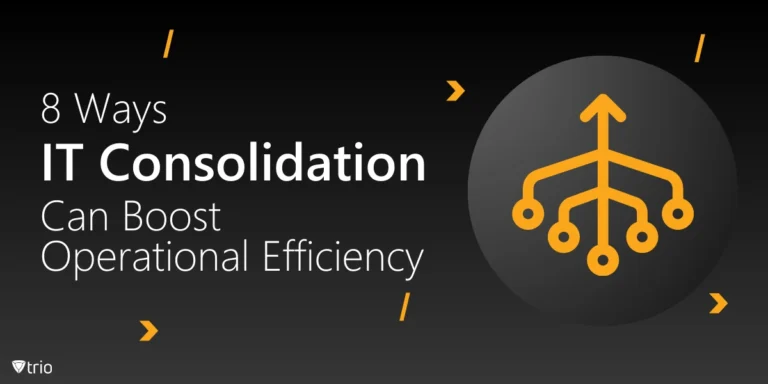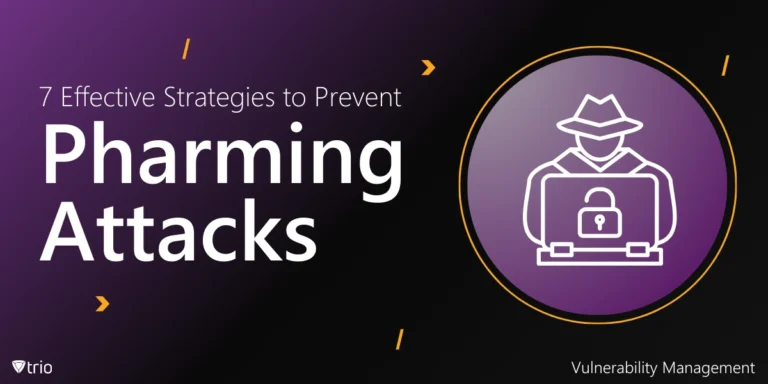A recent data breach at Landmark Admin, a third-party administrator for multiple U.S. insurance carriers, has exposed sensitive personal information of over 800,000 policyholders. The breach, initially detected in May 2024, revealed a vast array of customer data that could be exploited for identity theft and fraud, highlighting significant challenges facing companies entrusted with managing vast amounts of personal data. Here’s a close look at what happened, what information was compromised, and the lessons this breach brings to light for cybersecurity in the insurance industry.
Breach Details: What Happened at Landmark Admin?
Landmark Admin provides administrative support to major U.S. insurance carriers, including American Monumental Life Insurance Company, Pellerin Life Insurance Company, and American Benefit Life Insurance Company. Through these partnerships, the company maintains substantial amounts of sensitive data about policyholders across the nation.
On May 13, 2024, Landmark Admin detected unusual activity on its systems, signaling a potential security breach. The company immediately disconnected affected systems and disabled remote access to prevent further unauthorized access. Landmark also engaged a third-party cybersecurity team to investigate and secure its network.
However, despite initial efforts, the attackers managed to infiltrate the system a second time on June 17, 2024. This suggests that the cybercriminals may have exploited ongoing vulnerabilities within Landmark’s network. The investigation confirmed that the attackers had not only encrypted data but also exfiltrated it from Landmark’s servers. As the cybersecurity team worked to secure the environment, their forensic investigation continued and concluded by late July 2024, detailing the scope of data exposed and outlining steps to improve Landmark’s cybersecurity posture.
The Scope of Compromised Information
The types of information compromised in the Landmark Admin breach are extensive and highly sensitive, making this incident particularly concerning for the affected individuals. The data accessed by the hackers includes:
- Full names and physical addresses
- Social Security numbers
- State-issued IDs, such as driver’s license and passport numbers
- Tax identification numbers
- Bank account and credit card details
- Health insurance policy information
- Medical records
- Life and annuity policy details
With this range of information, hackers are equipped to engage in a variety of cybercrimes, including identity theft, fraudulent tax filings, and unauthorized financial transactions. Such sensitive information could allow cybercriminals to impersonate victims, obtain credit in their names, or even execute sophisticated phishing attacks targeting insurance and financial data.
Why This Breach is Particularly Dangerous
Data breaches in the insurance sector are not new, yet the Landmark Admin breach stands out for several reasons. Not only did the breach affect a significant number of individuals, but the type of data compromised also represents a comprehensive profile of personal, medical, and financial details. The potential for misuse here is vast and varied, with severe consequences for the affected individuals.
Risks Associated with Compromised Data
- Identity Theft and Financial Fraud: Social Security numbers, combined with driver’s licenses, tax IDs, and passport numbers, create a detailed profile for identity theft. Hackers can misuse these identifiers to open new credit accounts, take out loans, or even apply for tax refunds under false pretenses.
- Health Insurance and Medical Fraud: The exposure of health insurance policy numbers and medical information adds another layer of risk, as cybercriminals can use this data to submit fraudulent claims or sell the information on the black market, where it holds high value.
- Financial Data Exploitation: With access to bank account information and credit card details, hackers can execute unauthorized transactions, causing direct financial harm to victims.
In recent years, the insurance sector has faced increasing scrutiny regarding cybersecurity due to its vast repositories of sensitive data. Given the nature of the compromised information in this incident, the Landmark breach exemplifies the severe risks facing individuals when their data is inadequately protected.
Landmark’s Response to the Breach
In the aftermath of the breach, Landmark Admin has implemented several measures to mitigate potential harm to affected individuals and bolster its cybersecurity defenses.
- Identity Theft Protection Services: Landmark is offering complimentary identity theft protection and monitoring services to those impacted. This includes credit monitoring services that can alert individuals to unauthorized activities or changes to their credit profiles. Landmark has also extended identity theft recovery services and a $1 million insurance reimbursement policy to cover any losses incurred as a result of the breach.
- Notifying Affected Individuals: Landmark has begun notifying affected individuals by mail in multiple waves, beginning in October 2024. These notifications contain details on the compromised information and instructions for accessing the offered identity protection services.
- Enhancements to Cybersecurity Protocols: Following the breach, Landmark Admin has taken steps to upgrade its network security. This includes implementing stronger encryption protocols and revising their overall security practices to prevent future breaches. Landmark’s efforts aim to close the security gaps that allowed the attackers to re-enter its systems.
The response from Landmark reflects a standard approach to post-breach management. However, the recurrence of unauthorized access raises questions about the initial security measures in place, as well as the steps taken after the first incident to prevent a second breach.
A Pattern of Increasing Data Breaches
In 2023, IBM’s Cost of a Data Breach Report noted that the average cost of a breach had risen to $4.45 million, and in 2024, this figure climbed to $4.88 million. According to IBM’s 2024 Cost of a Data Breach Report, the global average cost of a data breach reached $4.88 million, marking a 10% increase from the previous year. This upward trend reflects not only direct financial losses but also long-term costs associated with reputational damage and the erosion of consumer trust.
As cybercriminals become more sophisticated, businesses handling sensitive data must enhance their defenses. Traditional measures like antivirus software and firewalls are no longer sufficient, and more advanced security approaches, including regular security audits, endpoint protection, and incident response planning, are necessary.
High-Profile Breaches: The New Norm?
Industries holding large quantities of personal data, including insurance, healthcare, and government, have become primary targets for cybercriminals. The significant monetary value of personal data on the black market makes these industries attractive to hackers, who use a combination of phishing, ransomware, and social engineering attacks to gain access to systems.
The Landmark Admin breach serves as a stark reminder that any company, regardless of its industry or size, is vulnerable. The frequency of such incidents points to an urgent need for a shift in how organizations perceive and address cybersecurity, especially in sectors entrusted with vast amounts of sensitive personal data.
Protecting Yourself in the Wake of a Data Breach
While businesses bear the primary responsibility for safeguarding customer data, individuals affected by breaches like this one can take proactive steps to protect themselves from further harm.
Key Steps for Affected Individuals
- Enable Two-Factor Authentication (2FA): Activating 2FA on all important accounts (e.g., email, banking, and social media) adds an additional layer of security. By requiring a secondary code, 2FA significantly reduces the risk of unauthorized access.
- Monitor Financial Accounts Regularly: Affected individuals should check their bank and credit card statements for unusual transactions. Reporting any suspicious activity immediately can prevent further financial losses.
- Place a Fraud Alert or Freeze on Credit: Contacting one of the three major credit reporting agencies (Equifax, Experian, or TransUnion) to set up a fraud alert can help prevent identity thieves from opening new accounts. For enhanced security, individuals may consider freezing their credit, which stops new credit accounts from being opened in their name.
- Use Strong, Unique Passwords: Creating strong passwords for online accounts can minimize the risk of unauthorized access. Avoid using the same password across multiple sites, as doing so increases vulnerability if one account is compromised.
- Consider Data Removal Services: Some companies offer services to help individuals monitor and remove personal information from databases and online directories. By using these services, people can reduce the visibility of their data online, minimizing the risk of identity theft.
- Update Software Regularly: Ensuring that operating systems and applications are up-to-date can help close potential security gaps that hackers could exploit. Regular updates often include patches for known vulnerabilities.
- Be Cautious on Public Wi-Fi Networks: When accessing sensitive information, avoid using public Wi-Fi networks, which are often unsecured and can be intercepted by hackers. Using a virtual private network (VPN) when connecting on public networks can add a layer of security.
- Limit Online Sharing of Personal Information: Minimizing the amount of personal information shared online can decrease the likelihood of it being used in phishing attacks. Be mindful of social media privacy settings and avoid oversharing personal details that could be used for identity theft.
These measures can help reduce the impact of a data breach and add layers of security to an individual’s digital life, even as companies work to address and prevent future incidents.
The Aftermath and Long-Term Outlook for Landmark and Affected Individuals
For Landmark Admin, the immediate response to the breach—disabling affected systems, blocking network access, and engaging a specialized cybersecurity team—marked only the beginning of a challenging recovery process. The initial steps helped prevent further data loss, but the re-entry by attackers highlighted critical gaps in Landmark’s defenses. The company’s decision to enhance its encryption standards and implement comprehensive security upgrades reflects an acknowledgment of the weaknesses exposed by this breach.
Landmark’s commitment to supporting affected customers through identity theft protection services is a standard yet necessary response, especially given the severity of the information compromised. Beyond the direct security upgrades and customer support, Landmark faces a broader task: restoring trust among policyholders, insurance partners, and the public. The re-entry by hackers raises concerns about how quickly and effectively Landmark’s initial response mitigated risks, signaling an industry-wide need for more rigorous security protocols in insurance administration.
See Trio in Action: Get Your Free Trial Now!
Lessons for the Insurance Sector and Cybersecurity
The Landmark breach underscores a pressing need within the insurance industry to enhance cybersecurity vigilance and proactive protection measures. With the types of sensitive data at stake, administrative and insurance service providers are expected to prioritize regular security audits, conduct real-time threat monitoring, and establish incident response protocols that adapt to emerging risks. Cybercriminals’ evolving strategies require that these organizations not only improve basic cybersecurity practices but also anticipate potential attack methods.
As insurance companies increasingly rely on third-party administrators like Landmark, robust vetting and collaborative cybersecurity measures must become central to safeguarding customer data. This breach serves as a critical reminder that effective data protection goes beyond immediate responses and depends on ongoing commitment to comprehensive security standards.




